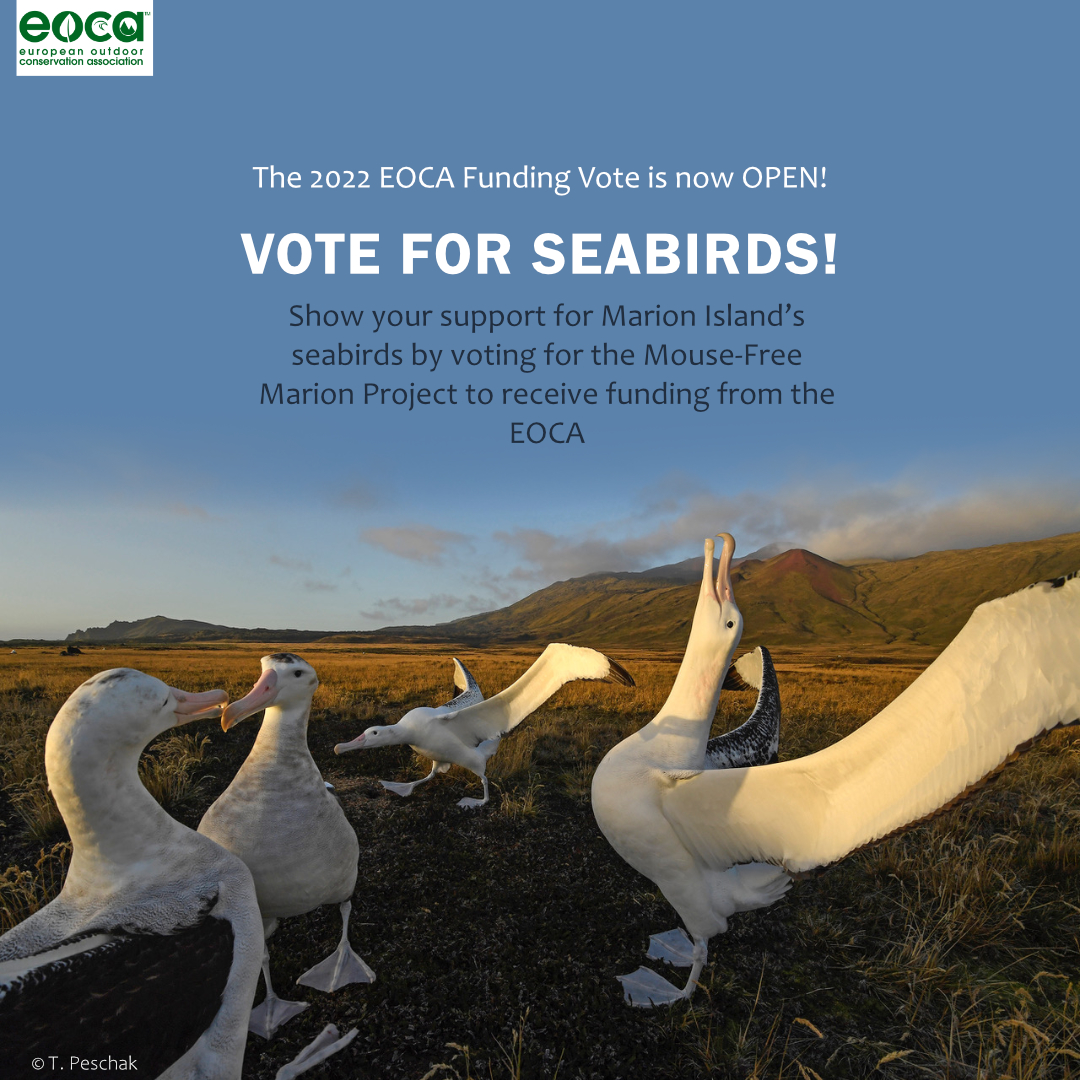
The Mouse-Free Marion Project’s campaign worked hard through social media with daily postings to Facebook and Instagram
A gam of juvenile Wandering Albatrosses displays on Marion Island; photograph by Tom Peschak
Last month the Mouse-Free Marion Project made it into the final round of the 2022 European Outdoor Conservation Association’s (EOCA) latest project funding vote. Listed with three other short-listed projects in the ‘Wild Places’ Category, the MFM Project needed to win the most public votes in order to receive a requested 50 000 Euros towards the funding critical for its work to ensure the conservation of Marion Island’s seabirds that face the onslaught of introduced House Mice Mus musculus.
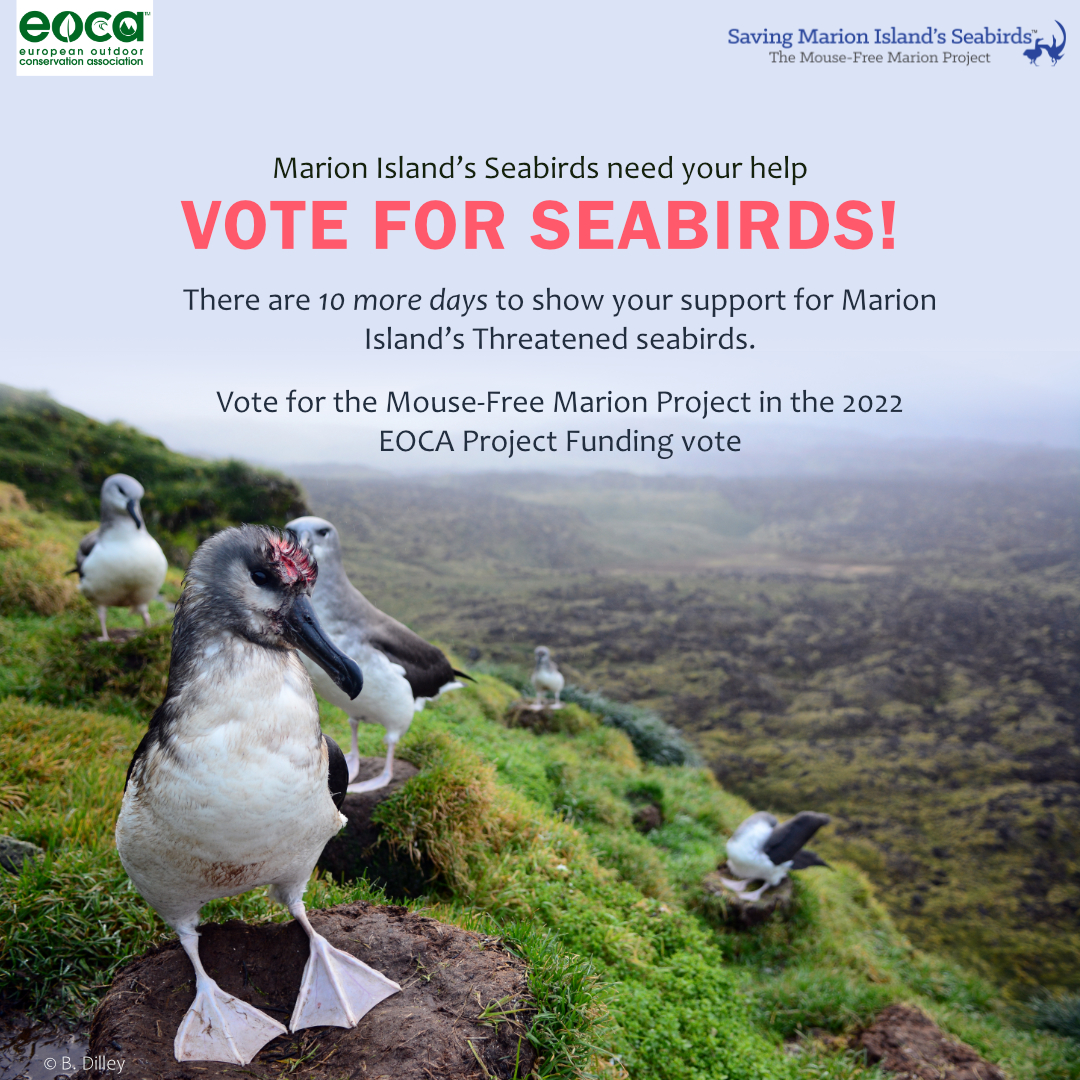
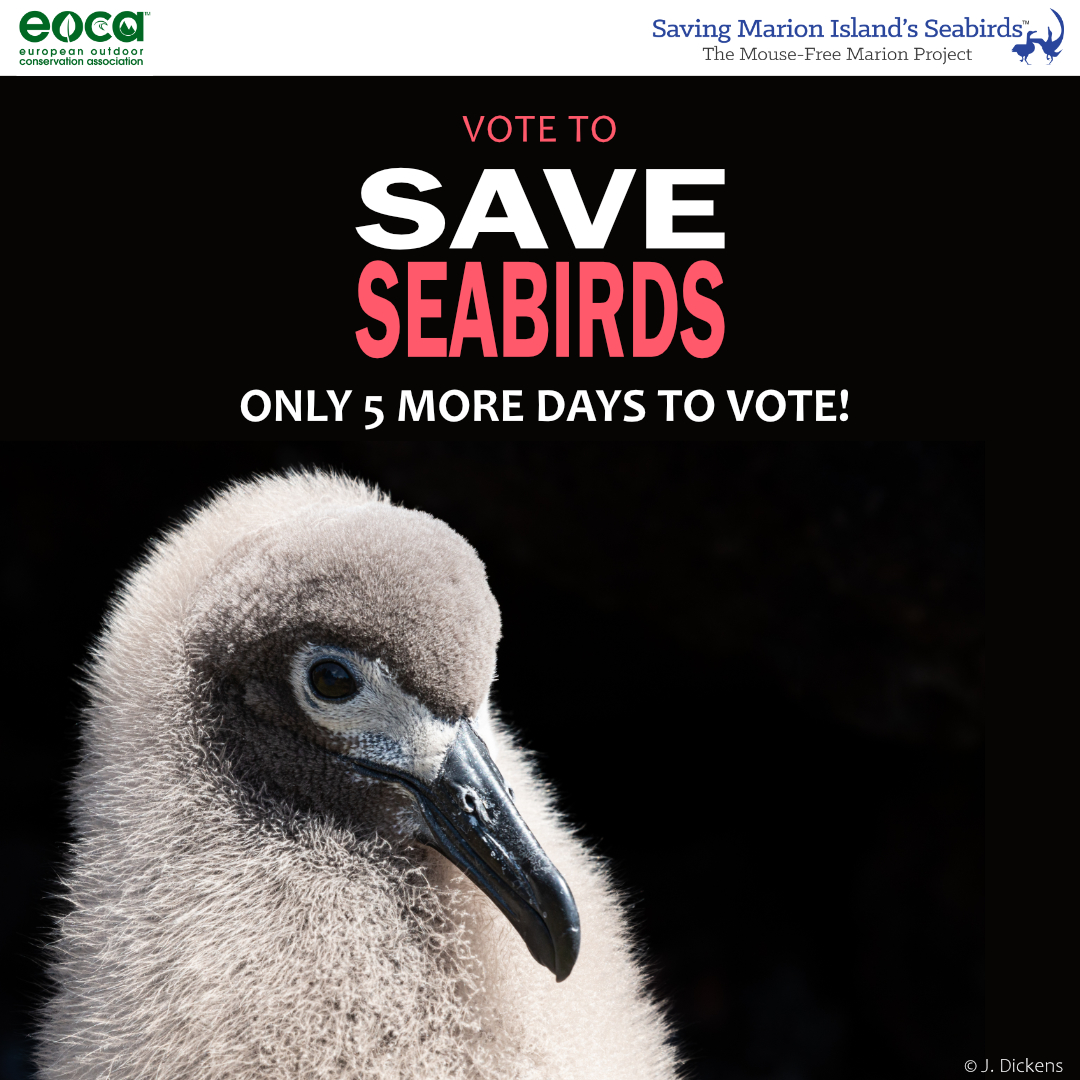
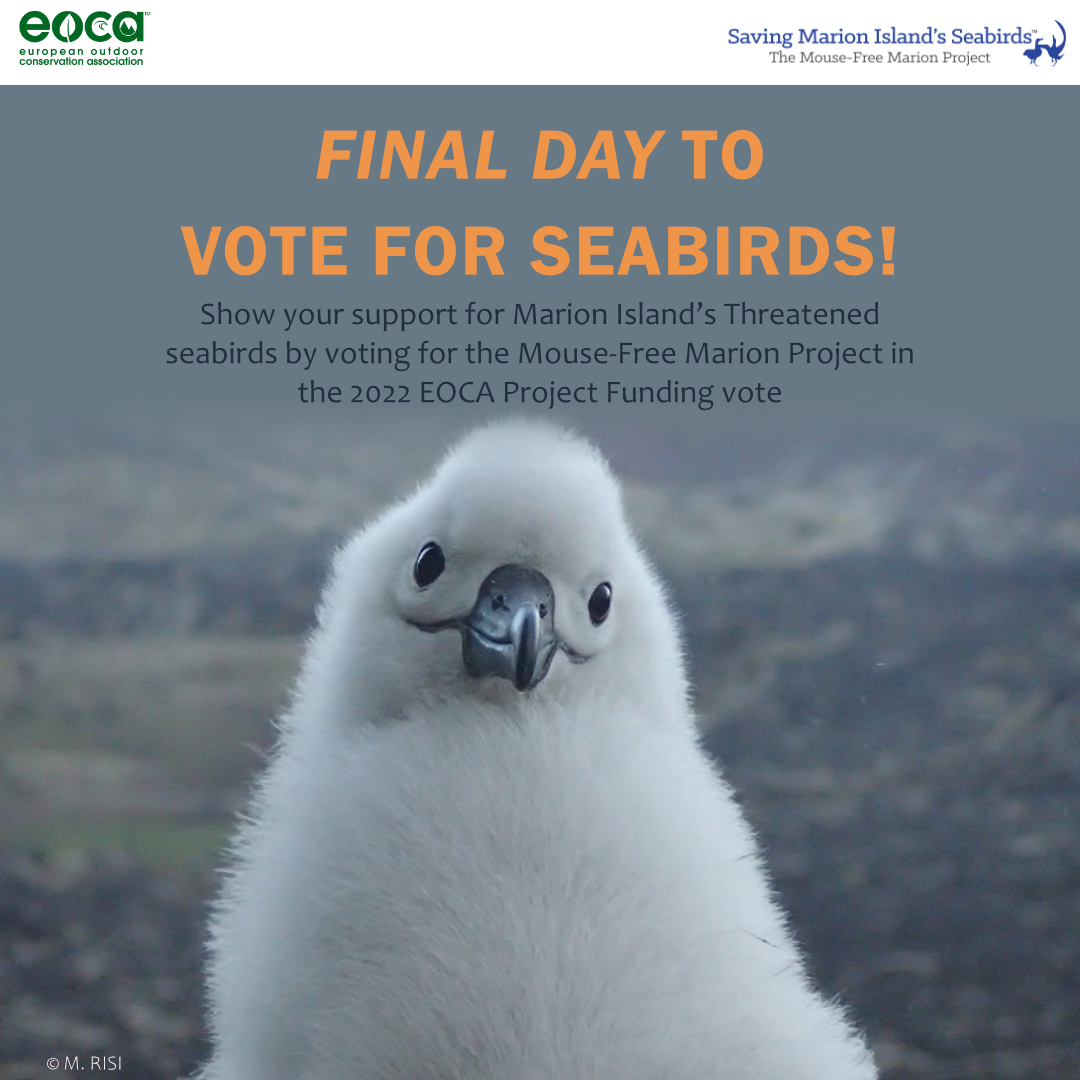
Regular social media postings kept the MFM Project campaign alive
What followed was a targeted campaign that saw the MFM Project receive widespread support from across South Africa and globally. The project’s social media and email campaigns reached thousands of people and posts were shared by partner institutions, families, friends and project supporters, and talks were given to interested groups. The call to vote was shared by South African university research groups working across the marine space and in the sub-Antarctic and Antarctic regions.
EOCA has now announced the results of the Wild Places Category and out of the four short-listed candidates, the “Mouse-Free Marion: - Saving Marion Island’s Seabirds” has been informed it won with 45.1% of the 8121 votes cast.
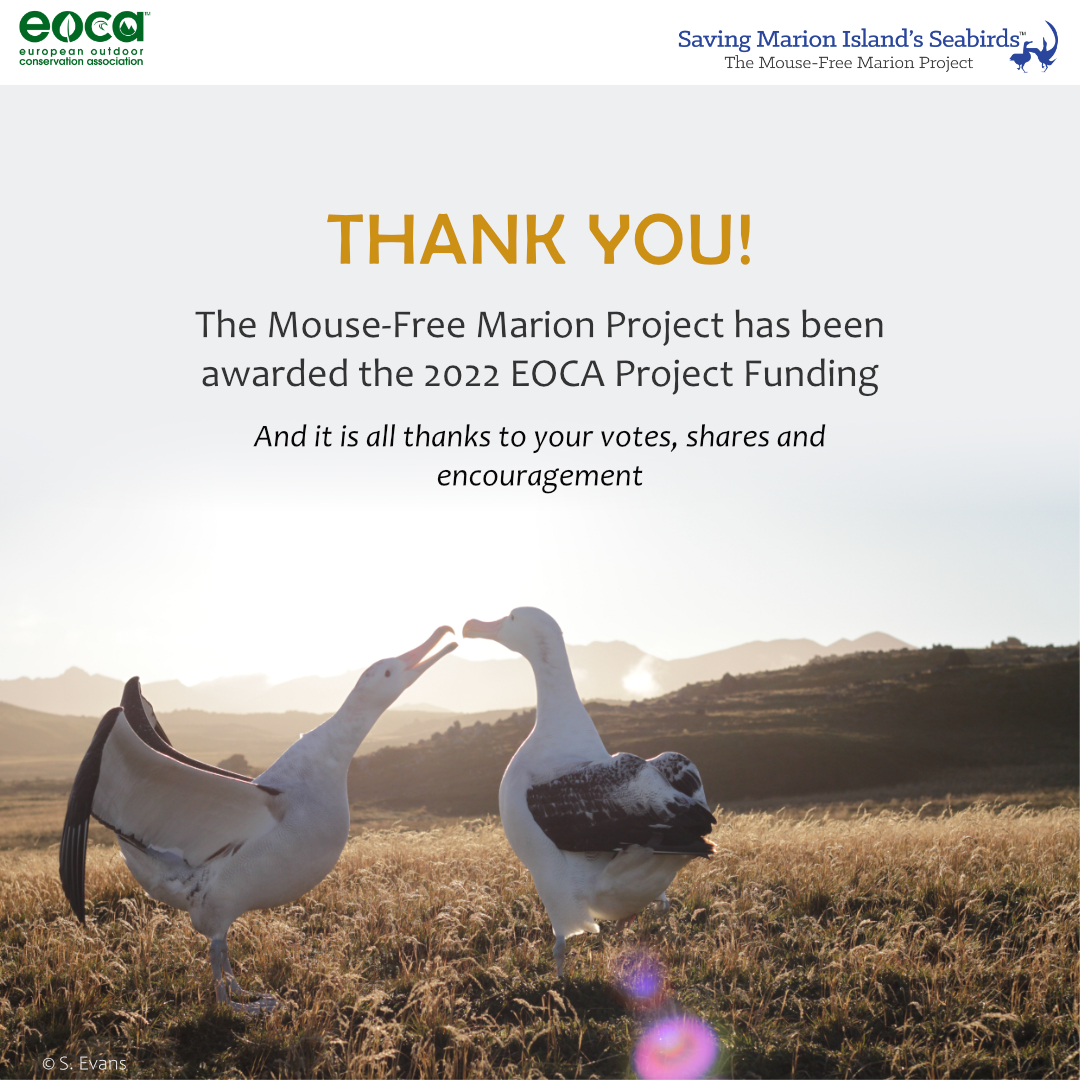
The Mouse-Free Marion Project expresses its thanks to its many supporters
Wandering Albatrosses display on Marion Island; photograph by Sean Evans
The Mouse-Free Marion Project writes: “The support that the MFM Project received was incredible. We thank each and every person who voted for Marion Island’s seabirds, whether it was sharing a social media post, forwarding an email or sending us an encouraging message. This funding, although only a small part of what is needed to conduct the eradication of invasive mice on Marion Island, will help enormously towards reaching our funding goal. We encourage those who would like to keep up with project progress to sign up to our newsletter and to follow our social media accounts.”
With thanks to Robyn Adams, Communications Officer, Mouse-Free Marion Project.
John Cooper, ACAP News Correspondent, 10 November 2022

 English
English  Français
Français  Español
Español 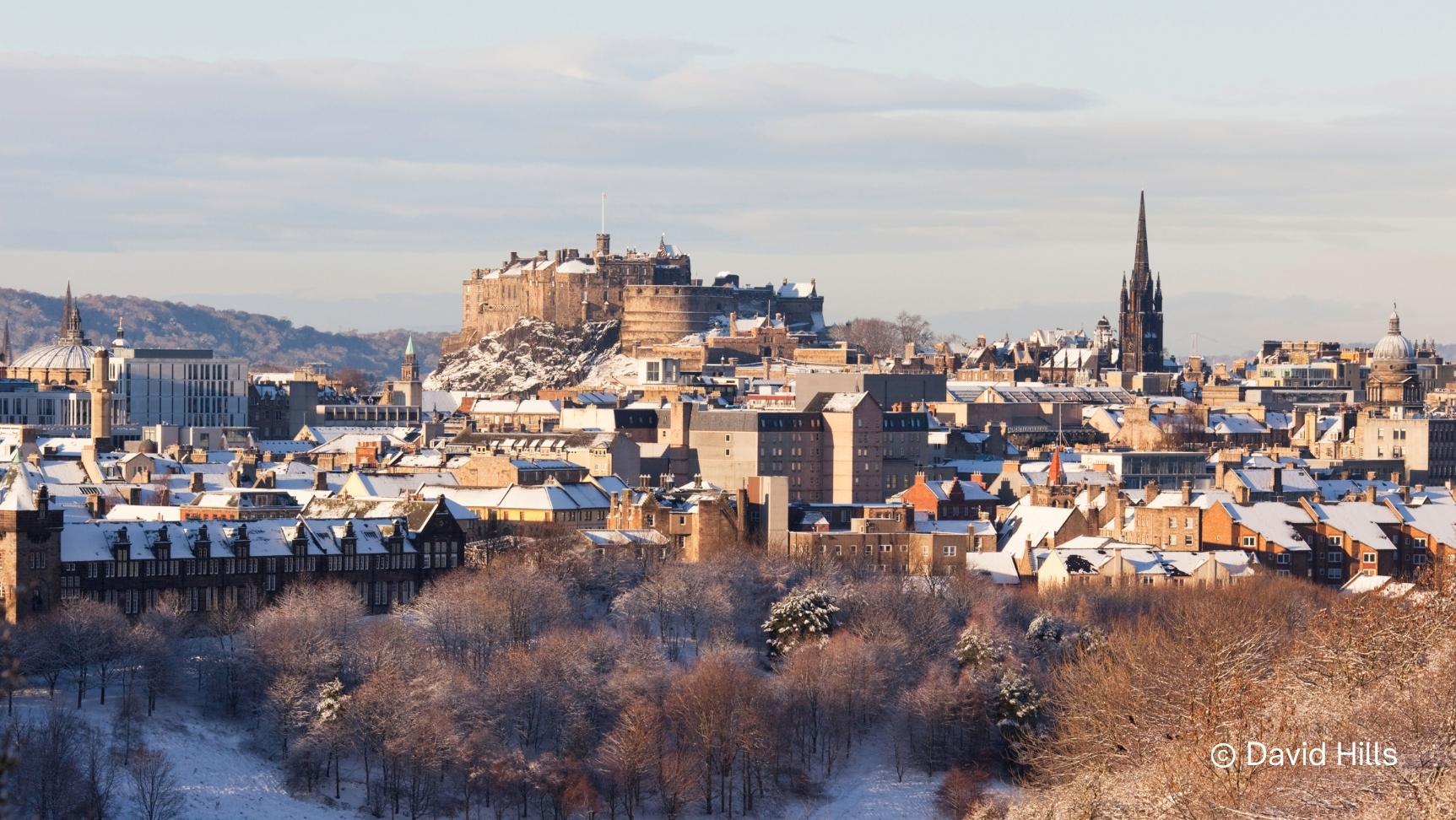 Edinburgh Castle looms large in the city's skyline; photograph by David Hills
Edinburgh Castle looms large in the city's skyline; photograph by David Hills
 The ACAP-listed Black Petrel - a species included in the study linking seabird groundings to light pollution; photograph by Kirk Zufelt
The ACAP-listed Black Petrel - a species included in the study linking seabird groundings to light pollution; photograph by Kirk Zufelt A Southern Giant Petrel downy chick and adult on Bird Island; photograph by Alex Dodds
A Southern Giant Petrel downy chick and adult on Bird Island; photograph by Alex Dodds